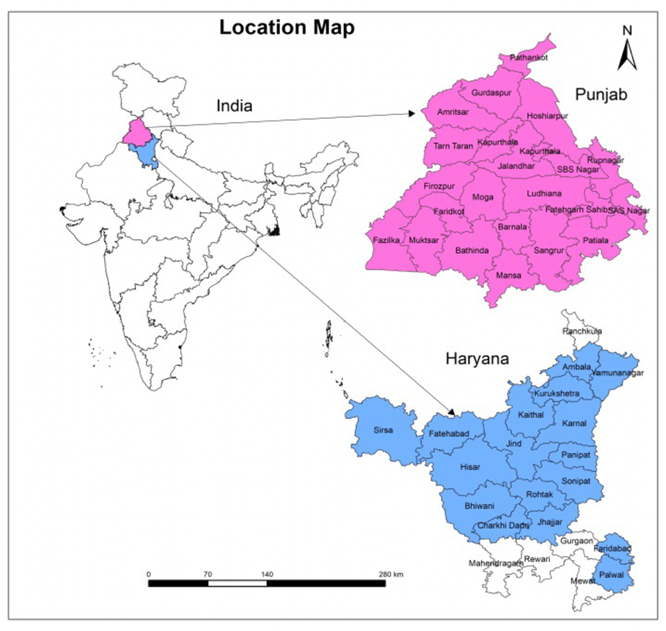In News:
- The longstanding contentious issue of ownership of Punjab and Haryana over Chandigarh has once again flared up.
- Recently, the Punjab Assembly unanimous passed a resolution reiterating the state’s claim on Chandigarh.
What’s in today’s article:
- News Summary
- Historical Background (Genesis of Chandigarh, Capital of Punjab)
- Reorganisation of Punjab Act (Birth of Haryana, Common Capital, Punjab’s Claim, etc.)
News Summary:
- Earlier in March 2022, Union Home Ministry announced to align service conditions of all employees of the Chandigarh administration with Central civil services.
- Also, the Central Government changed rules for appointments in Bhakra Beas Management Board (BBMB).
- Earlier, the appointments were done only from the states of Punjab and Haryana but now the board can recruit from anywhere in India.
- Political parties in Punjab criticised this and termed it an attempt to ‘snatch’ Chandigarh from Punjab.
Historical Background:
- Before 1947, in undivided India, the capital city of Punjab province was Lahore.
- In 1947, during partition, the capital of Punjab was temporarily shifted to Shimla. However, the then Prime Minister Jawahar Lal Nehru decided on a modern city as the capital of Punjab.
- Subsequently, in 1948, the Punjab Government acquired as many as 22 villages from Kharar, a town in Punjab to build a new capital city.
- The capital of Punjab was officially shifted from Shimla to Chandigarh on September 21, 1953.
Reorganisation of Punjab:

- On November 1, 1966 a new state of Haryana was created, under the Punjab Reorganisation Act, 1966, as a result of dividing the former state of Punjab into two separate states—Punjabi-speaking Punjab and Hindi-speaking Haryana. This was implemented, based on the recommendations of Sardar Hukum Singh Parliamentary Committee.
- In April 1966, acting on the recommendation of the Hukam Singh Committee, the Indian government set up the Shah Commission under the chairmanship of Justice J. C. Shah, to divide and set up the boundaries of Punjab and Haryana.
- According to Shah Commission report, Tehsil Kharar (including Chandigarh) should also be a part of Haryana.
- However, both Punjab and Haryana claimed Chandigarh as their capital.
- The Central Government declared Chandigarh as a Union Territory, pending a resolution.
- Subsequently, Chandigarh became a joint capital of both Punjab and Haryana.
- It was decided that properties in Chandigarh were to be divided in a 60:40 ratio in favour of Punjab.
Punjab’s Claim:
- During the reorganisation of Punjab, the then Prime Minister Indira Gandhi had announced that, in due course, Haryana would have its own capital and Chandigarh would go to Punjab.
- The Central Government had offered Rs 10 crore grant to Haryana and an equal amount of loan for setting up the new capital.
- As per the Rajiv-Longowal Accord, the Central Government agreed that Chandigarh would be transferred to Punjab on January 26, 1986 but the decision was later withdrawn.
- The Rajiv–Longowal Accord was an accord signed by then Prime MinisterRajiv Gandhi and Akali leader of Punjab Harchand Singh Longowal in July 1985.
Himachal Pradesh’s Claim:
- Himachal Pradesh also seek 7.19 per cent share in posts of Chandigarh Administration for the hill state's officers.
- In the past, the CM of the state also said that they stake claim for its share over electricity generated from power projects run by Bhakra Beas Management Board (BBMB).









